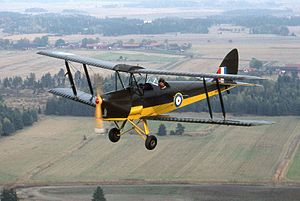No. 669 Squadron AAC
| No. 669 (HQ) Squadron AAC 669 Aviation Squadron No. 669 Squadron RAF | |
|---|---|
| Active | 16 November 1944 – 31 December 1944 (RAF) 1 January 1945 – 10 November 1945 (RAF) 1 June 1971 - 1 September 1976 1 April 1978 - 31 July 2016 HQ Sqn in 2021 into 3 Regt AAC |
| Country | |
| Branch | |
| Part of | 3 Regiment Army Air Corps |
| Garrison/HQ | Wattisham Flying Station |
No. 669 (HQ) Squadron AAC is a squadron of the British Army's Army Air Corps (AAC) which was disbanded as a flying Squadron on 31 July 2016 and reformed as HQ Sqn 3AAC in 2021. It was formerly No. 669 Squadron RAF, a glider squadron of the Royal Air Force active during the Second World War as part of No. 229 Group RAF, South East Asia Command[1]
History
[edit]Royal Air Force
[edit]No. 669 Squadron RAF was formed on 16 November 1944 at Bikram, Patna, British India[2] as a glider squadron, with the intention of being used for airborne operations by South East Asia Command. However, after a short period it was redesignated No. 671 Squadron RAF, due to an earlier mix-up of squadron designations and bases.[2] The squadron was reformed anew the next day, with the same role and at the right base, and continued to train, as part of No. 343 Wing RAF, until the surrender of Japan, when it became surplus to requirements. The squadron was disbanded on 10 November 1945 at Fatehjang, British India.[2]
Army Air Corps
[edit]The squadron was reformed as part of the British Army's Army Air Corps as 669 Aviation Squadron at RAF Wildenrath under the control of No. 1 Wing AAC operating de Havilland Canada Beaver AL.1s and Westland Scout AH.1s. The squadron was renamed to 669 Squadron AAC on 1 January 1973 and was deployed to Northern Ireland for various times between October 1973 and February 1976. The squadron was disbanded on 1 September 1976 and became No. 12 Flight AAC.[3]
The squadron was reformed at Hobart Barracks, Detmold, Germany on 1 April 1978, from 659 Squadron, 9 Regt operating the Scout AH.1, continuing with Northern Ireland deployments. 669 moved to AAC Wattisham during 1995 becoming part of 4 Regt and operating the Westland Lynx AH.7 and the Westland Gazelle AH.1 in the anti-tank role. The Gazelles were removed during 2007 and the squadron moved to 9 Regt.[3] Its last base was Dishforth Airfield operating the AgustaWestland Lynx AH.9A until 31 July 2016.
For 15 months until November 2016 the squadron operated as the British Army Training Unit Kenya (BATUK) Aviation Support Squadron based at Nanyuki Airfield.[4]
Today
[edit]The squadron was reformed in 2021 to become the HQ squadron for 3 Regiment AAC.

Aircraft operated
[edit]
| From | To | Aircraft | Variant |
|---|---|---|---|
| November 1944 | December 1944 | Waco Hadrian | |
| June 1945 | July 1945 | Waco Hadrian | |
| July 1945 | November 1945 | de Havilland Tiger Moth | Mk.II |
Squadron bases
[edit]| From | To | Base |
|---|---|---|
| 16 November 1944 | 31 December 1944 | Bikram, Bihar, British India |
| 1 January 1945 | 19 March 1945 | Basal, Punjab, British India |
| 19 March 1945 | 27 May 1945 | Belgaum, Karnataka, British India |
| 27 May 1945 | 23 June 1945 | Upper Topa Camp, Punjab, British India |
| 23 June 1945 | 6 July 1945 | Basal, Punjab, British India |
| 6 July 1945 | 10 November 1945 | Fatehjang, Punjab, British India |
See also
[edit]References
[edit]- ^ Delve 1994, p. 84
- ^ a b c d e Halley 1988, p. 452.
- ^ a b "669 Squadron". British Army units from 1945 on. Retrieved 22 April 2024.
- ^ https://www.facebook.com/TheArmyAirCorps/posts/army-air-corps-leaves-kenya-on-wednesday-30th-of-november-2016-the-army-air-corp/1529907803703502/
- ^ Jefford 2001, pp. 266–271.
Bibliography
[edit]- Delve, Ken (1994). The Source Book of the RAF. Shrewsbury, Shropshire, UK: Airlife Publishing. ISBN 1-85310-451-5.
- Halley, James J. (1988). The Squadrons of the Royal Air Force & Commonwealth, 1918–1988. Tonbridge, Kent, UK: Air-Britain (Historians) Ltd. ISBN 0-85130-164-9.
- Jefford, C.G. (2001). RAF Squadrons, a Comprehensive record of the Movement and Equipment of all RAF Squadrons and their Antecedents since 1912 (2nd ed.). Shrewsbury, Shropshire, UK: Airlife Publishing Ltd. ISBN 1-85310-053-6.
